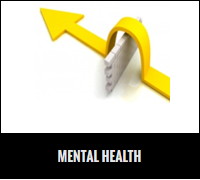The Continuum Theory
My vision was to establish nomothetic laws about human development: laws that focus on universal sequences and their contexts in human development that could apply to all people all of the time.
In the past, we lived on the earth without knowing what Earth was, having ideas like the earth is flat, it’s the center of the universe, the sun revolves around us and if it gets angry it may not rise again. We lived with ignorance and misunderstanding. But once we had the knowledge that the earth was round, it inspired us to travel the globe and meet other civilizations. Once we understood that the sun wasn’t an angry god that revolved around us, we could stop being afraid that our actions could cause it to not rise again. We could envision traveling in space. These understandings were vital contributions to humanity’s growth.
You may ask me if it is important to have a functional definition of self to advance our knowledge in human development, psychology, and psychotherapy. For me, the answer is, absolutely. Can we do what we do in psychology and psychotherapy without knowing what the self is, or agreeing upon a definition of what the self is? To me the answer is, we certainly have been trying but have not achieved it well enough. For the science of psychology and psychotherapy, we need to have a functional definition of the self that everyone can agree on, so the research that is done can be uniformly described and understood by everyone.
I have given this close to thirty years of thought, asking questions that perhaps others haven’t and not accepting answers that perhaps others have.
The life span development of a human being is evolutionary in nature. I believe it occurs as an overlapping, three-part developmental process: body, mind (brain), and the self. The self is conceived-birthed along with body and mind, with all three existing initially as potential that is able to develop fully. All three begin this development at conception-birth. The self has the identical potential for development as the body and mind and is fully integrated with body and mind. The self is the seat of conscious awareness. It is the I we refer to. The more fully it is developed, the more it is able to use the body and the mind and its own abilities and facilities to navigate effectively through life.
It makes complete sense that the self would identify itself with what it becomes aware of first, i.e., with its own body. It is the first thing its awareness becomes familiar with, the first thing it experiences, the first thing it can begin to log into its memory bank (the mind), the first thing it can begin to comprehend, and the first thing its parents continually attend to. So, since the self's first conscious experience is of and with its body, it stands to reason it will identify with and believe that it is a body.
As the mind develops, the self begins to notice that those in charge of its development are trying to reach another part of it other than its body. The repetitious nature of much of this early communication is intended for the self to remember certain things like the naming of objects. It begins to realize that it can bring forth, recall this repetitious information, that it is using something else other than its body. It begins to use this other part and finds that it is rewarded with appreciation from those in charge. It begins to enjoy using it. The self may not know yet what this other part is or what it is called, or where the seat of this apparatus, its mind, is. Those attending to it are beginning to teach it language, counting, and the recognition of objects; later, they ask it to memorize facts; and later, they ask it to think about problems of mathematics, reasoning, and consequential thinking. It is natural for the self to start to think of itself as a body and a mind.
Since the concept that we are self (the self being the conscious force that is aware of and makes decisions with relation to its body and mind) is missing from our developmental philosophy, the self's developmental needs are never addressed. Nor does it become fully aware and conscious of its own abilities or facilities. Therefore, the self's needs and developmental potential are left latent or, worse, are damaged and continue to wait to be healed and fully developed.
From conception, each human being has a life force, an energy to potentialize its body, mind, and self. The reality of this life force is obvious when we consider how a zygote potentializes in the womb into a full-blown human being which is birthed. This life force continues throughout life. From conception and on into late teens, each human being’s life force, the energy to potentialize, is focused primarily on the full development of the body. Once that is completed, this developmental energy, the life force moving us to develop fully, shifts its energy to the full development of the mind’s potential. From late teens to around forty years of age, each human being’s life force is focused primarily on the full development of the mind. That is why the questions a human being asks at around age thirteen — What’s for dinner? Can I get the latest sneakers? — shift around the age of twenty-plus to more conceptual questions about politics, religion, gender, race, the future, and relationships that requires one to use the mind.
The third stage, which starts around forty years of age, is when nature again shifts its energy from the development of the mind’s potential to the full development of the self's potential. This explains not only mid-life crises but also why so many individuals begin to turn from materialism (which is simply the self using the memory bank and calculator that is the brain, quantifying what one has, thinking that more is better, and that more equals happiness) to an awareness, a realization that more is not making oneself, or anyone for that matter, happy. The shift occurs when the questions that are being asked regarding how to achieve happiness change from the quantity of stuff and money to the quality of one’s life. One begins to question one’s own motives, attitudes, relationships, and career path, thus becoming what we might call a more aware person, and perhaps one who yearns for a more meaningful lifestyle.
Of course, even though going through each stage is part of nature’s plan, all but the body stage must be consciously fostered by other human beings. This development of the body stage can be seen when a child will naturally try to stand up, then try to walk, engage in play, and generally try to imitate other bodily movements and actions of adults around him or her. All of this helps growth and development of the body’s potential. The same is only true to a limited degree with the mind. A child might acquire language by imitation, but reading and writing must be taught, and problem solving and consequential and creative thinking must be explained at a time the mind is most capable of acquiring these abilities — from twenty years of age onward. The final stage, that of developing and potentializing the self, takes the greatest amount of teaching and conscious attention. We initially teach self-control and certain moral issues to a child and young adult in order to have them be ready to potentialize their self's full development in the third stage, around forty.
Historically, two factors prevented people from potentializing both their minds and their selves. The first was that all their time was consumed by simply trying to find food and protect themselves from dangers.(4) The second was that the average life span was so short, it prevented most people from reaching the chronological age where their life force could shift into either the full development of mind (twenty-plus) or later to the full development of the self (forty-plus). Both of these developmental stages need conscious attention and teaching by those who have developed their own minds and selves. Very few people ever developed their minds beyond learning language, customs, and traditions. There were even fewer people whose selves were developed, who could then help to develop and potentialize others’ selves.
When philosophers and psychologists debate about the self, it is always whether there exists some type of solid, full-blown, finished entity like the body or the brain that can be examined and studied. In trying to get a handle on the self, it seems we harken back to ideas we generally think of as spiritual: an immortal soul that persists after the body dies, a being, a spirit (as in guardian spirit), an invisible entity inside of us that usually is ascribed consciousness, and often is synonymous with goodness. We relate to self as a spirit in a similar way that we see a god as a spirit, something that perhaps directs or should direct us.
What seems to be missing from this debate is the possibility that the self is very much like the body and mind, birthed at the same time and totally integrated with body and mind. It is not a separate entity but has different facilities, as do body and mind. I believe all three are vibrating, energetic entities. All three come into existence at birth. All three need nourishment and nurturing. All three have their own developmental potential. For simplicity’s sake, I call the various abilities that can be potentialized in the body muscles, in the mind capacities, and in the self facilities.
All three need specific exercises for their specific abilities to fully develop. If you tie up the feet, like some people used to do, you can damage the body’s potential for mobility and balance. If you do not talk to a child or engage the mind of a child in reasoning, you will damage the mind’s potential to communicate and reason. The self has its own facilities with potential to develop. But since we cannot see self, and since from science’s perspective it does not exist, we do not worry about what developmental damage we may be causing by, as it were, tying it up, not nourishing it properly, not exercising it suitably, and not developing it correctly. I believe the facilities of the self are actually diminished and damaged over time instead of being fully developed, which I believe is the primary reason why many people experience emotional problems and feel unsatisfied and unfulfilled with their lives.
Both Eastern philosophers and Western philosophers and psychologists deny the existence of the self as a real entity. Eastern philosophers like Confucius and Lao Tzu were hoping to end humanity’s suffering caused by what they saw as attachment to self (ego) and its struggle with accepting the way things were (which is not that different from teachings about being rewarded in the afterlife if you accept the way things are here on Earth). Western philosophers and psychologists denied the existence of the self because they couldn’t observe or study the self. I believe that the denial of self as a real entity is a mistake of major proportions.
Since our origin, humans have looked up and have seen light coming from the sky. One was a very bright, warm light, and one was a smaller, cooler light, and there were lots of tiny glimmering lights. We didn’t know where any of these lights were coming from; all we knew was that we could observe the light. The observing of the light was real, even though the source was obscure. Later, much later, we were able to establish the source and the composition of the sun, moon, and stars, and explain why they emanated or reflected light. Knowing the composition of the source of the observable light isn’t necessary for us to say that the light we observe is real and therefore its source is real. I believe it is same with self.
We have for thousands of years observed behavior, which we have attributed to a part of a human being that isn’t the body or mind. We have called it spirit, soul, and being. It has been clear to us that a person who goes around slums, gathering up and caring for the
dead and dying, is not behaving based on a well-developed body or super-intelligent mind. We understand this behavior is being activated by another part of the person. We have observed this type of selfless behavior in many individuals historically and close to home. We have created words in our languages to describe it. But because we can’t observe the source of this selfless behavior, like we couldn’t observe the source of the lights in the sky, and because we don’t know the source’s origin and composition, we are trying to dismiss the reality of the source, while accepting the reality of the behavior.
The concept of atoms, which was put forth by Democritus in the third millennium BCE as “tiny, invisible, indivisible particles that in different combinations formed all material reality,” was similarly ignored and discredited by our much more famous philosophers like Aristotle, Plato, Socrates, Kant, Newton, and Galileo, who all believed matter was made up the four elements: air, fire, earth, and water. Why? It was taught by wise, educated men in power who had control over what people believed and, no matter how logical and intuitively correct the theory was, at that time they could not see atoms.
We can’t see the self. So, what? Now, I don’t think that it is all bad to not believe in things we can’t see, like the Loch Ness Monster, Leprechauns, and Superman, but when our experience continually confirms a concept, we owe it to ourselves to investigate it more fully.
There is actual harm done to a person because we insist on denying the existence of a developmental self. This harm relates directly to all the issues that have the prefix self: low self-esteem, no self-support, no self-confidence, no self-love, low self-worth, no self-respect, no self-awareness, no self-care, not self-motivated. They translate into terms such as self-destructive, unconscious, unaware, self-conscious, self-doubt, self-sabotage, procrastination.
Many of the issues of psychology, parenting, education, and medicine (such as stress, anxiety, depression, personal failure, and rebellion), can be explained and healed better by viewing the self as an entity that can make good decisions once it is fully developed. This development is based on 1) growing its awareness so it can be fully in touch with what feels painful, wrong, or absent; 2) being able to clearly define pain, as well as wants and needs, which we call creating a vision; 3) communicating these newly recognized feelings and needs effectively and without blame; and 4) doing it all with unconditional, loving behavior. Self-love prompts one to obtain what one needs. Self-love is synonymous with self-sufficiency, not with being selfish or self-centered. Since loving energy is nourishment like air, food, and water, it makes logical sense that it needs to be supplied unconditionally. The conditional behavior of most well-meaning parents, friends, and others deprives people of the necessary amount of nourishment they need to thrive. The best solution is what I mentioned before — teaching children to become unconditionally self-sufficient, as they are in acquiring air, food, and water.








